A Century Of Loving Care
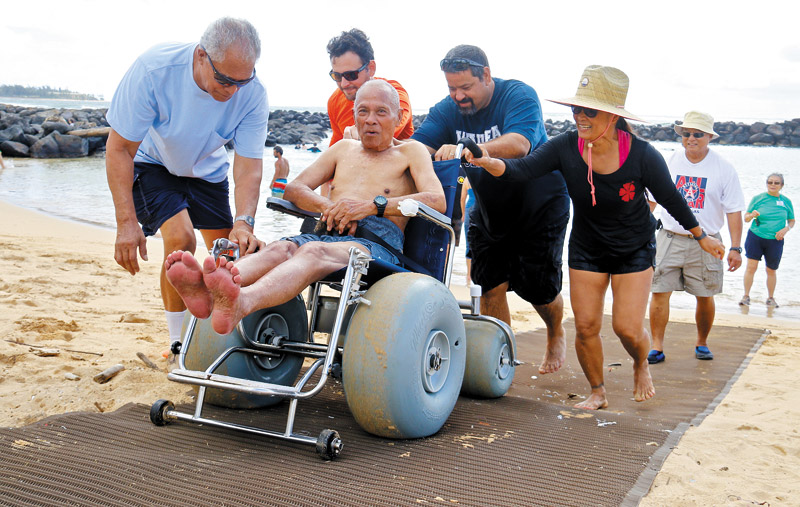
SMMH turns 100 this month and over the years has become a long-term care facility for residents who get to regularly participate in outings like beach days under the supervision of staff and the help of many volunteers. PHOTO COURTESY DENNIS FUJIMOTO
One hundred years ago, a hospital on the eastern-facing slopes of the Garden Isle was established to serve tuberculosis patients. The institution was built in a locale near the ocean so patients could receive the fresh air benefits thought to contribute to their healing — long before antibiotics came into play. Dedicated and named after Samuel Mahelona — son of Emma Kauikeolani Napoleon Mahelona Wilcox and stepson of Albert Wilcox, who died from the disease in his late 20s — the ward was its own self-sustaining community.
“When someone had tuberculosis, they were separated and isolated,” says Placido Valenciano, a physical therapist at Samuel Mahelona Memorial Hospital (SMMH).
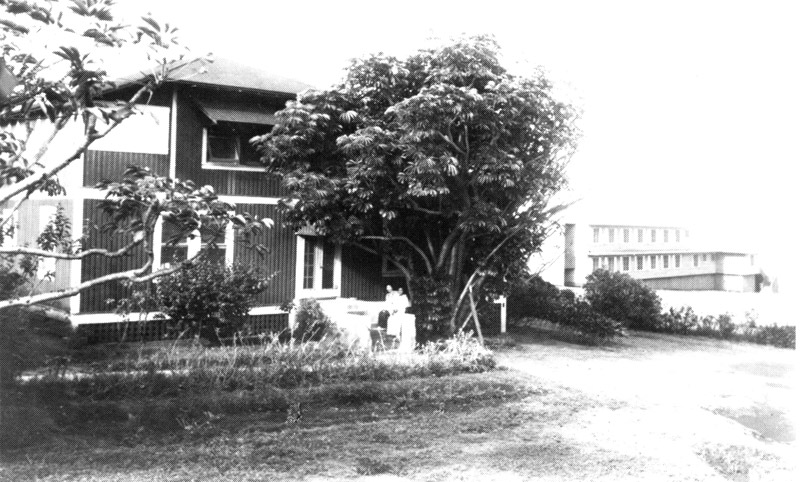
One of the original buildings at Samuel Mahelona Memorial Hospital when it used to be a place for patients diagnosed with tuberculosis. PHOTO COURTESY SMMH
The disease was so contagious, patients weren’t allowed to leave the hospital once they were diagnosed and, therefore, everything had to be manufactured on-site. SMMH had its own dairy facility, vegetable and hog farm, as well as butcher. An auditorium, movie theatre, cafeteria and even a wood shop (which happens to be Valenciano’s office now) also were available to the patients.
“They did a lot of crafts to keep them busy,” says Valenciano, adding that ceramics and lauhala weaving were among the other hobbies patients took up.
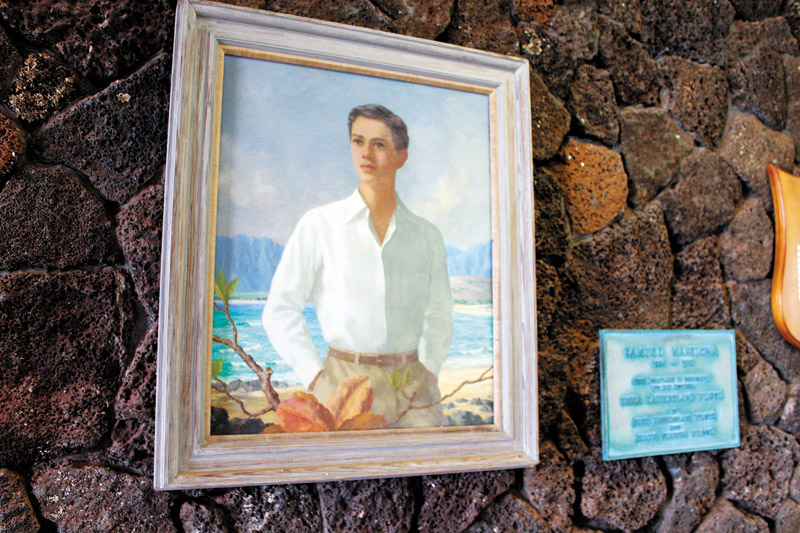
A portrait of the late Samuel Mahelona who died from tuberculosis and to whom the hospital with the same name was built in honor of.
The hospital — which celebrates its centennial anniversary this month with its “Through the Years” festival Saturday, from 6 to 9 p.m., at the SMMH auditorium and courtyard — was founded to aid the ill and prevent the disease from spreading. Still, everyone knew at the time that it also meant people would be ripped away from their families, including children.
“No matter what age you were, you were taken away from your family,” says Valenciano who has gathered many interesting, as well as heartbreaking stories, from his patients who were connected to the original facility in some capacity.
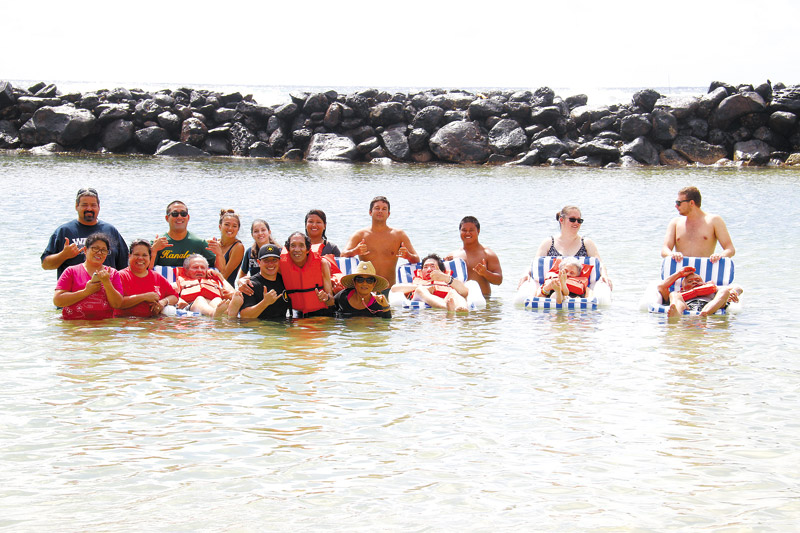
>SMMH long-term care residents with volunteers during a recent outing at Lydgate Beach Park. PHOTO COURTESY DENNIS FUJIMOTO
William Villanueva, a long-term care resident at SMMH, doesn’t have a personal connection to the ward, but remembers the former building where the tuberculosis patients were housed. The 91-year-old, who grew up in Kīlauea, recalls seeing the structure, which has since been torn down, where it stood in its initial location close to the water.
Once medication was developed to combat the disease in the 1960s, that building, as well as the hospital’s agenda, was revamped. More structures were added and focus shifted to long-term, 24-hour care, where patients like Villanueva, who has been living at SMMH for the past three years, have since benefitted.
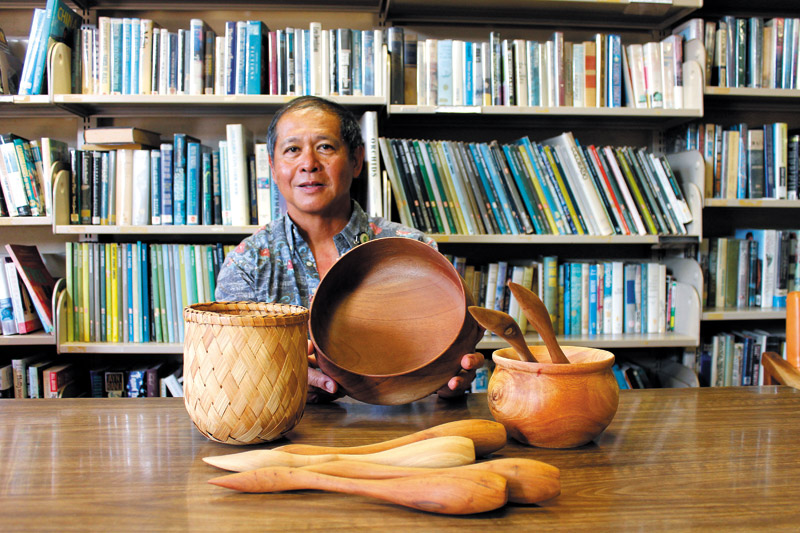
Placido Valenciano, physical therapist and unofficial historian of SMMH, with several wooden crafts created by former tuberculosis patients of the hospital.
Another resident who has reaped benefits from SMMH’s shift to long-term care services is Helen Nishimura. The 91-year-old also grew up on Kaua‘i during the same era the hospital was established. She’s grateful it continues to thrive after so many years.
“I love it here,” she says. “Everybody’s so nice and kind.”
Of course, the candy and cookies she proclaims to win playing bingo don’t hurt her fondness for the facility either. But it’s really SMMH’s more than 100 employees like Valenciano that make Nishimura and Villanueva’s experiences so memorable.
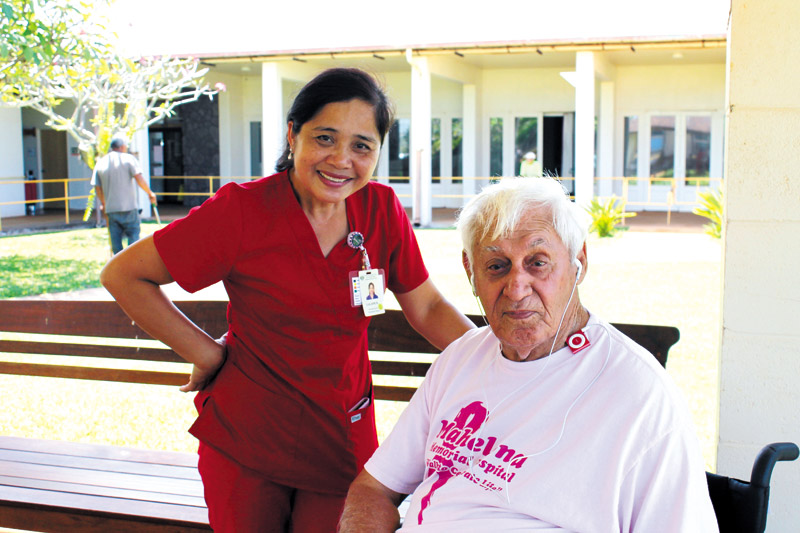
Lalaine Rabaino, with long-term care resident Alfred Pacheco, enjoying some fresh air in the courtyard of SMMH.
This is evidenced one particularly bright, sunny day, when a group of about 20 residents and employees are gathered in the hospital’s courtyard for some fresh air. Lalaine Rabaino, part of the hospital’s recreational therapy staff, is there with long-term care resident Alfred Pacheco, and they are both taking noticeable pleasure in the moment. After 17 years of working at SMMH, Rabaino says her favorite aspects about the job are helping the residents participate in activities like this, as well as visiting the beach and celebrating birthdays.
“And so many parties,” she says. Since SMMH’s attention moved from treating tuberculosis patients to admitting patients with mental illnesses in need of long-term supervision in the 1960s, the hospital has continued to expand. In 1983, a separate psychiatric unit opened and by the mid-1990s, Mahelona Medical Center became part of the Kaua‘i Region of Hawai‘i Health Systems Corporation. About 10 years ago, the facility also opened a 24-hour Emergency Services, which continues to serve thousands of patients every year.
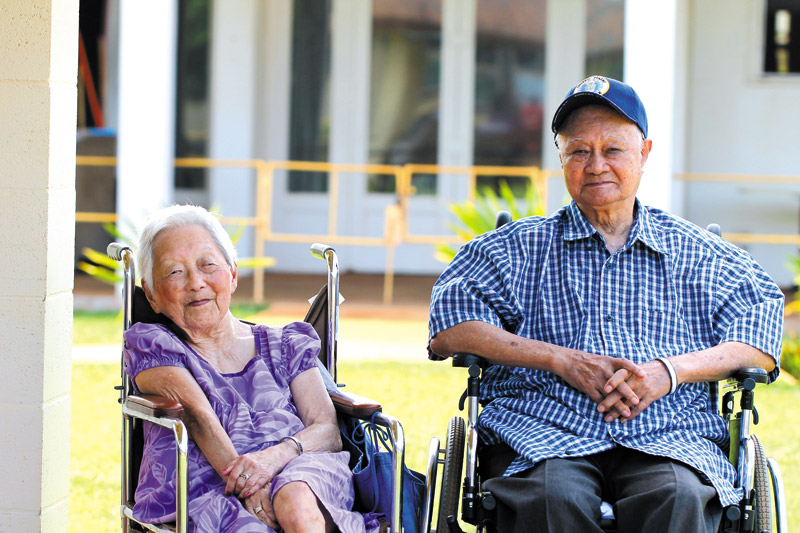
Helen Nishimura and William Villanueva, two of SMMH’s long-term care residents, have celebrated almost as many birthdays as the hospital, which turns 100 this month.
Valenciano, whose brother is Judge Randal, has worked at SMMH since 1979 and has been a part of its many changes. He’s looking forward to even more developments and upgrades, as well as a continuing bond with everyone.
“This is my family,” says Valenciano regarding the inpatients and outpatients he treats, as well as his coworkers.
And he can’t deny his particular penchant for being SMMH’s unofficial historian.
“I collect the stories,” he says proudly, regarding the many tales of yesteryear he’s heard over the decades from patients.
He plans to collect many more as SMMH transitions into the next century.
For more information on this weekend’s celebration, call Josie Pablo at 823-4138.
cocomidweek@gmail.com




